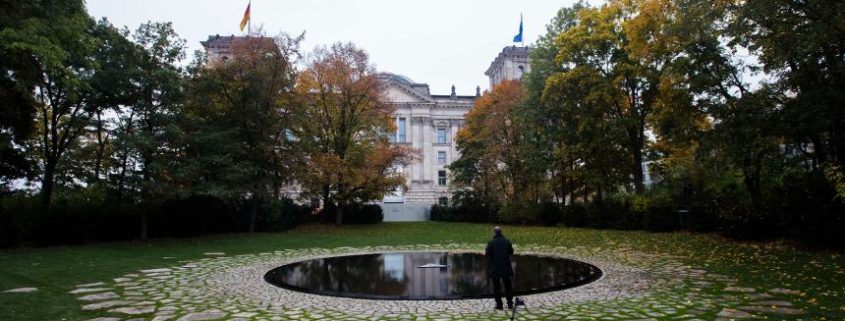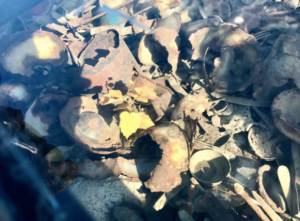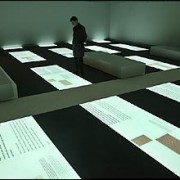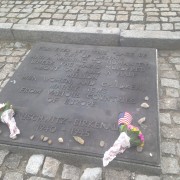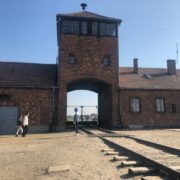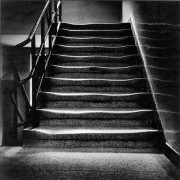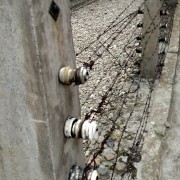The Contrast Between Life and Death
By Kristen Varganova
As we’ve traveled from one country to the next, the number of visits to mass murder remembrance sites increased dramatically. Aside from the painful history, most memorials that we visited on our trips were set alongside breathtaking scenery. From Lety to AuschwitzBirkenau, and the Sinti-Roma Memorial, I couldn’t help but notice the overarching contrast between life and death.
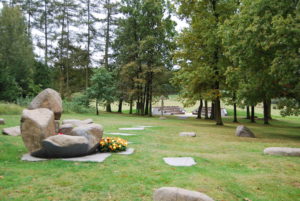
Lety concentration camp memorial amidst a beautiful forest. (Credit: https://www.cz-museums.cz/gloria-musaealis/eventDetail/2769)
As we left Prague and began our drive to Lety, I was curious as for why our bus was headed towards the woods. At the site, a small path leads the visitors towards, what looks like, a shattered sphere; the broken figure serves as a memorial for the 1,309 prisoners interned in the camp during WWII. Our tour guide explained that this labor camp was established by the Czechoslovak government, two days before the German occupation. The camp was set up for “people avoiding work and living off of crime.” Although not stated explicitly, such description was aimed towards the Roma population. The site of the memorial is centered among green grass and tall trees; it was clear that the former labor camp was now occupied by a beautiful forest. The voices of two families settling down the hill for an afternoon picnic could be heard from where our group was standing. I was astonished by how much life was present at a place where hundreds were once killed.
A couple of weeks after the visit to Lety, our group took a trip to Auschwitz-Birkenau. During the morning part of the tour, Auschwitz I was covered in fog. The weather alone made this experience so much more dreary than originally anticipated. Our tour guide explained that Auschwitz I was initially built to hold Polish political prisoners of 1940. The first mass murder of prisoners took place in September 1941; the first prisoners to be executed in the gas chambers were 600 Soviet prisoners of war. Birkenau or Auschwitz II, an extension of Auschwitz I, didn’t exist until early 1942. The extension death camp was built by 10,000 Soviet POWs in 1941, by 1924 only 945 of the original 10,000 pows were still alive. Those that survived the building process of Birkenau were ultimately killed at the camp a few weeks after its opening. Birkenau went on to serve as one of the primary sites of the Nazis’ Final Solution during the Holocaust.
The crematoria at Birkenau were located towards the back of the camp where now a tall forest grows. Ponds where the Nazi’s once disposed of human ashes, are spread out around the destroyed gas chambers. As I stood by one of the memorials, a monarch butterfly landed on my shoulder — a sign of life. After spending a few moments at the ponds, our tour guide led us to where Canada I used to stand. At Canada I, scraps of silverware and clothes laid aimlessly under the glass. As I looked closer I saw weeds and green leaves starting to spurt out from under the remains. Yet again, I couldn’t help but notice how beautiful and full of life this dreadful place has become.
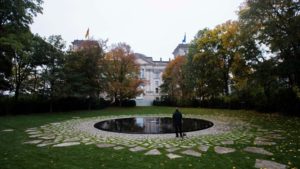
Sinti-Roma memorial, surrounded by nature, overlooking the German Parliament. (Credit: http://www.spiegel.de/international/germany/monument-to-sinti-and-roma-murdered-in-the-holocaust-opens-in-berlin-a-863212.html)
Lastly, one of the final mass murder remembrance sites we visited was the Sinti-Roma memorial in Berlin, Germany. The monument is dedicated to the 500,000 Romani people murdered by Nazi Germany during the Holocaust. The memorial itself is a shallow pool surrounded by nature; a Roma poem can be seen inscribed at the bottom of the pool. The site was designed by Dani Karavan and opened by the German chancellor, Angela Merkel, in October of 2012. Information boards hang on the walls of the memorial in chronological order of the genocide. Light music can be heard playing from the speakers hidden among the trees —the site feels serene. The pool overlooks the German parliament building, highlighting the divide between the past and the future. Once again, I was left surprised by the amount of contrast present between life and death in such a painful place of remembrance.
In summary, although all the remembrance sites that we visited throughout our program deal with painful history, they also offer signs of hope. Whether the memorials were built amidst nature on purpose, like that of the Sinti-Roma, or whether life took a course of its own and grew in the place where mass murder sites used to stand, the overarching contrast between life and death was prominent everywhere we went.

